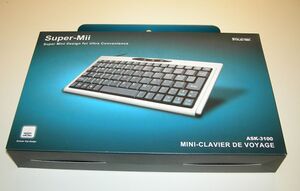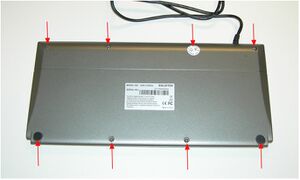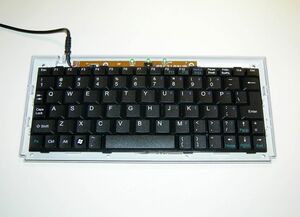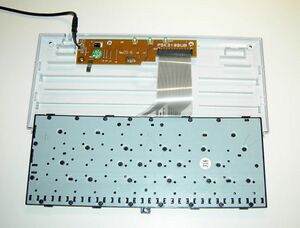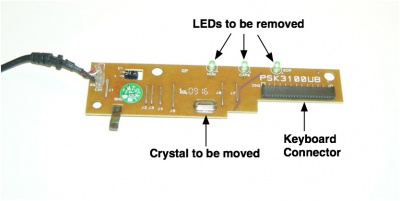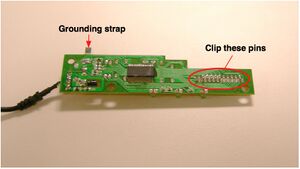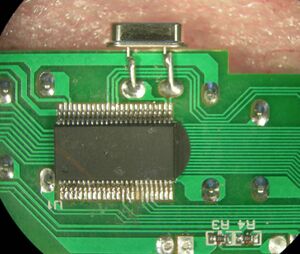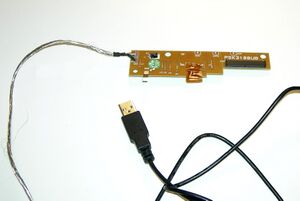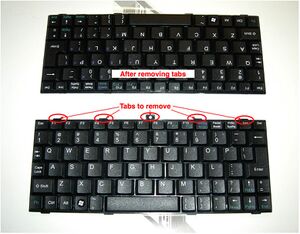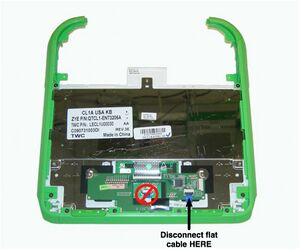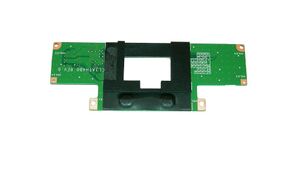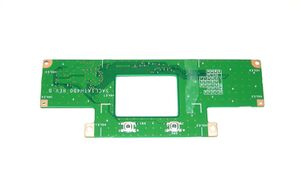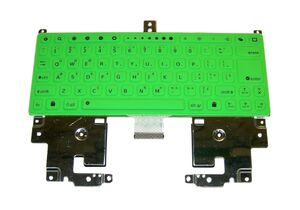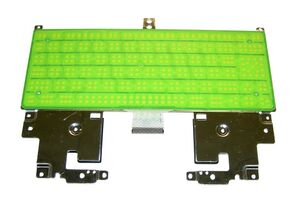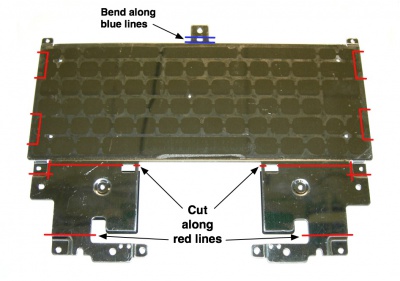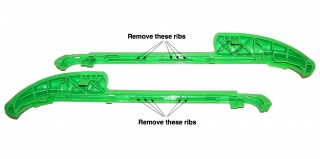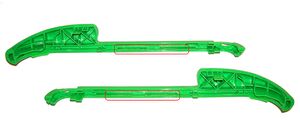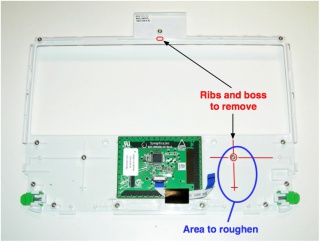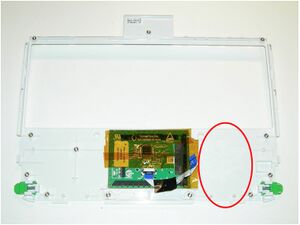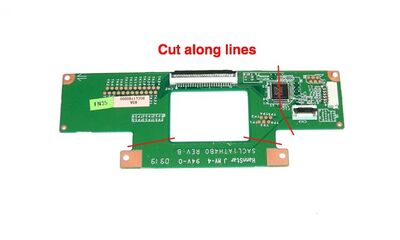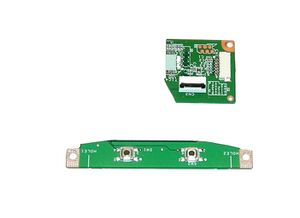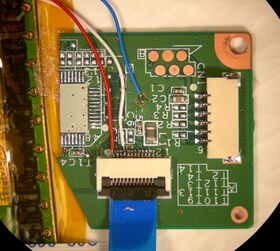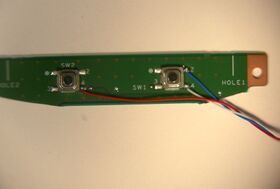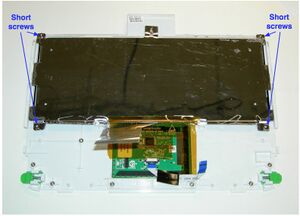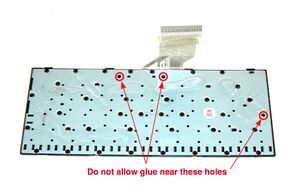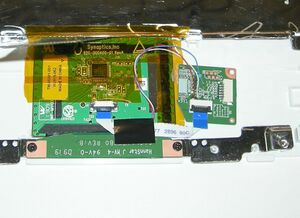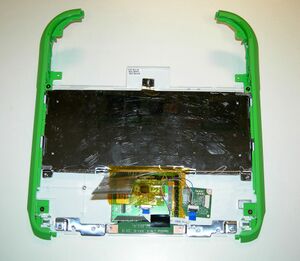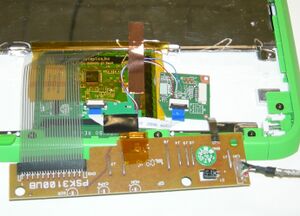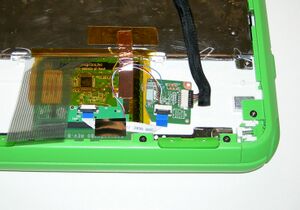XO 1.5 USB Keyboard
This page describes how to change the keyboard in a XO-1.5 Laptop to a non-membrane USB version.
Contents
Scope
These are detailed instructions for installing a non-membrane keyboard into an XO-1.5 laptop. They apply to all pre-production as well as production models. With little change, they also apply to the later model of the XO-1 (with a single capacitive touchpad).
Credit is freely given to the author of the instructions for doing this modification to an XO-1 (part I, II), found on instructables.com.
WARNING
This modification includes permanent modifications of the XO laptop, and cannot be reversed. Even if you are experienced, there is a significant chance of damaging the laptop beyond repair while following these instructions.
Material
You will need:
- An XO-1 (CL1A) or XO-1.5 (CL1B) laptop
- A micro USB keyboard (such as this one).
- A #1 screwdriver
- Fine pitch soldering equipment
- A magnifier of some sort (lens, loupe, microscope...)
- An X-Acto knife
- A small file and/or fine grade sandpaper
- A way of cutting steel and grinding plastic (such as a Dremel tool)
- cellulose (scotch) or polymide (kapton, preferred) tape
- quick drying epoxy glue or archival double-sided tape
Instructions
Preparing the Keyboard
Dismantling the XO
| Make sure the laptop is running the latest firmware: q2e41 for XO-1 and q3a35 for XO-1.5. | |
| Remove the plastic cover from the hinge between the top and bottom pieces of the XO. There are two screws in the top, holding the two pieces together. | |
| Remove the handle cover. | |
| Disconnect the top and bottom halves of the XO, setting the top unit aside for now. | |
| Completely disassemble the bottom half (leaving only the FPC cable connected to the touchpad --- that connector is incredibly fragile and easy to break.) (link to disass. guide, except missing). | |
| Remove the keyboard and XO KBC board. | |
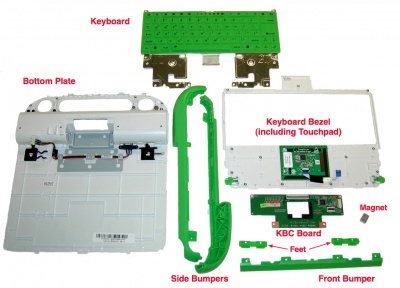
|
Remove the waterproofing foam and rubber covering from the KBC controller. Save the rubber. |
Modifying the Keyboard Tray
Modifying the XO Plastic
Hooking up the Touchpad
| Remove the KBC chip from the board. Clean the pads, making sure that none are shorting. | |
| Cut the KBC board as indicated. | |
| Check the cut edges of the connector and button boards for layer/layer shorts, shave with XActo as needed to fix. Wire three wires (28/30 ga) between the button board and the connector board. | |
Installing the New Keyboard
Place the keyboard in the keyboard tray, and attach it to the keyboard bezel. Be careful not to tighten the screws at the top of the tray, as they are missing a spacer. Be careful to only use the short screws for the bottom screws of the tray.
Now play attention to the vertical fit --- it is a little tight. Gently using a file, it is possible to remove 0.3 to 0.5mm of polycarbonate from the top and bottoms of the keyboard bezel opening, improving the fit.
Once you can get the keyboard located such that no keys rub against the bezel, it is time to secure it. Either epoxy or archival glue can be used. In the case, it is important to reassemble and ensure that the keyboard is centered before it begins to cure.
Installing the Connector Board
Now attach the side bumpers. Make sure to hold the bumpers tight against the keyboard bezel when tightening the screws to ensure a minimal gap.
Place the metal spacers and the button board/connector board on the keyboard bezel.
Attach the cable from the touchpad to the connector board.
Reattach the front bumper.
